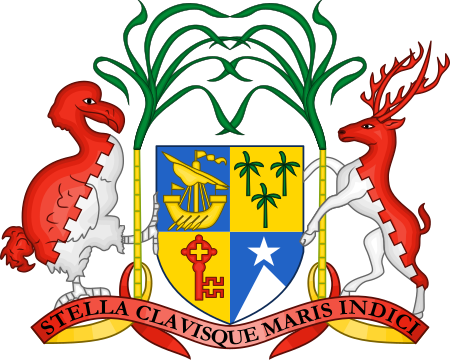Army of the West (1862)
| |||||||||||||||||
Read other articles:
2020年夏季奥林匹克运动会波兰代表團波兰国旗IOC編碼POLNOC波蘭奧林匹克委員會網站olimpijski.pl(英文)(波兰文)2020年夏季奥林匹克运动会(東京)2021年7月23日至8月8日(受2019冠状病毒病疫情影响推迟,但仍保留原定名称)運動員206參賽項目24个大项旗手开幕式:帕维尔·科热尼奥夫斯基(游泳)和马娅·沃什乔夫斯卡(自行车)[1]闭幕式:卡罗利娜·纳亚(皮划艇)[2…

Oronerosingolo discograficoScreenshot tratto dal video del branoArtistaGiorgia Pubblicazione30 settembre 2016 Durata3:32 Album di provenienzaOronero GenerePopContemporary R&B EtichettaSony Music ProduttoreMichele Canova Iorfida Registrazione2016 FormatiDownload digitale, streaming CertificazioniDischi di platino Italia[1](vendite: 50 000+) Giorgia - cronologiaSingolo precedenteLa mia stanza(2014)Singolo successivoVanità(2017) Oronero è il primo singolo estratto …

Advocacy for Alberta seceding from Canada The neutrality of this article is disputed. Relevant discussion may be found on the talk page. Please do not remove this message until conditions to do so are met. (August 2018) (Learn how and when to remove this message) Proposed secessionist state from CanadaAlbertaProposed secessionist state from Canada (and potential accession into the United States)Alberta is shown in dark green with the United States in light green. Alberta in orange shown within C…

2010 video game 2010 video gameToy Story 3North American cover art featuring Woody (left) and Buzz (right)Developer(s)Avalanche Software[a]Publisher(s)Disney Interactive Studios[b]Composer(s)Chuck E. Myers[c]SeriesToy StoryPlatform(s)PlayStation 2PlayStation 3Xbox 360Microsoft WindowsWiiNintendo DSPlayStation PortableOS XiOSReleasePlayStation 3, Xbox 360, Microsoft Windows, Wii, PlayStation Portable, Nintendo DS, OS XNA: June 15, 2010UK: July 16, 2010iOSWW: June 15, 2010P…

County in Illinois, United States County in IllinoisMcDonough CountyCountyMcDonough County Courthouse, 2006 FlagLocation within the U.S. state of IllinoisIllinois's location within the U.S.Coordinates: 40°28′N 90°41′W / 40.46°N 90.68°W / 40.46; -90.68Country United StatesState IllinoisFoundedJanuary 25, 1826Named forThomas MacdonoughSeatMacombLargest cityMacombArea • Total590 sq mi (1,500 km2) • Land589 sq …

This article does not cite any sources. Please help improve this article by adding citations to reliable sources. Unsourced material may be challenged and removed.Find sources: List of Oceanian films – news · newspapers · books · scholar · JSTOR (April 2024) (Learn how and when to remove this message) This article is part of a series onOceanian Culture Society Shared Histories Languages Religion People Indigenous European Arts and literature Architecture …

Ethnic group in Canada Ethnic group Tamil Canadiansகனேடிய தமிழர்Total population237,890[1][nb 1]0.7% of the total Canadian population (2021)Regions with significant populationsGreater Toronto, Greater Montreal, Greater Vancouver, Calgary Region, Edmonton Region, National Capital RegionLanguagesTamil, Canadian English, Canadian FrenchReligionPredominantly:Hinduism (75.8%)Minorities:Christianity (17.4%)Irreligion (5.5%)Islam (1.0%)Buddhism (0.13%)Sikhism (0.…

For domed and retractable roof stadiums, see List of covered stadiums by capacity. The following is a list of arenas ordered by seating capacity, which is the maximum number of seated spectators the arena can accommodate for a sports event. Only the capacity for indoor sports, such as basketball, ice hockey, and volleyball, are included. Currently all arenas with a capacity of 15,000 or more are included. Venues are only included if they are designed primarily for sports traditionally held indoo…

Type of geometry GeometryProjecting a sphere to a plane OutlineHistory (Timeline) Branches Euclidean Non-Euclidean Elliptic Spherical Hyperbolic Non-Archimedean geometry Projective Affine Synthetic Analytic Algebraic Arithmetic Diophantine Differential Riemannian Symplectic Discrete differential Complex Finite Discrete/Combinatorial Digital Convex Computational Fractal Incidence Noncommutative geometry Noncommutative algebraic geometry ConceptsFeaturesDimension Straightedge and compass construct…

Sōma 相馬市KotaBalai Kota Sōma BenderaEmblemLokasi Sōma di Prefektur FukushimaSōmaLokasi di JepangKoordinat: 37°47′48″N 140°55′11″E / 37.79667°N 140.91972°E / 37.79667; 140.91972Koordinat: 37°47′48″N 140°55′11″E / 37.79667°N 140.91972°E / 37.79667; 140.91972Negara JepangWilayahTōhokuPrefektur FukushimaPemerintahan • WalikotaHidekiyo TachiyaLuas • Total197,79 km2 (76,37 sq&#…

One of the five major championships in senior golf Golf tournament U.S. Senior OpenTournament informationLocationStevens Point, WisconsinEstablished1980Course(s)SentryWorld Golf CoursePar72Length7,102 yards (6,494 m)Organized byUSGATour(s)PGA Tour ChampionsEuropean Senior TourFormatStroke playPrize fundUS$4,000,000Month playedJune/JulyTournament record scoreAggregate261 Steve Stricker (2019)To par−20 Fred Funk (2009)Current champion Bernhard LangerLocation mapSentryWorld GCLocation in the…

هذه المقالة يتيمة إذ تصل إليها مقالات أخرى قليلة جدًا. فضلًا، ساعد بإضافة وصلة إليها في مقالات متعلقة بها. (يونيو 2021) خطوط الجريان - وهي خطوط ذات قيمة ثابتة لدالة التدفق - للتدفق المحتمل غير القابل للضغط حول أسطوانة دائرية في تدفق منتظم. يتم تعريف دالة المجرى للتدفقات غير القاب…

Spanish footballer For other people named Fernando Gómez, see Fernando Gómez (disambiguation). In this Spanish name, the first or paternal surname is Gómez and the second or maternal family name is Colomer. Fernando Fernando in 2016Personal informationFull name Fernando Gómez ColomerDate of birth (1965-09-11) 11 September 1965 (age 58)Place of birth Valencia, SpainHeight 1.78 m (5 ft 10 in)Position(s) Attacking midfielderYouth career Colegio Salgui1980–1983 Vale…

Regno d'Ungheria (dettagli) (dettagli) Regno d'Ungheria - LocalizzazioneIl Regno d'Ungheria nel 1190 Dati amministrativiNome ufficialeMagyar Királyság Lingue ufficialilatino, ungherese Lingue parlateungherese, latino, tedesco ed altre[nota 1] CapitaleEsztergom (1000–1256)Buda (1256–1536) Dipendente da Sacro Romano Impero Regno di Polonia Regno di Boemia Dipendenze Regno di Croazia (in unione personale) Voivodato di Valacchia Voivodato di Moldavia PoliticaForma di StatoMonarchia For…

Economic and social class in the United States The working class is often defined as those lacking college degrees, which is a majority of American adults. In the United States, the concept of a working class remains vaguely defined, and classifying people or jobs into this class can be contentious. Economists and pollsters in the United States generally define working class adults as those lacking a college degree,[1] rather than by occupation or income. Many members of the working clas…

First meeting of the revolutionary Irish Republic parliament (1919-21) First Dáil ←New assembly 2nd Dáil→OverviewLegislative bodyDáil ÉireannJurisdictionIrish RepublicMeeting placeMansion House, Dublin[1]Term21 January 1919 – 16 August 1921[2]Election1918 general electionGovernmentGovernment of the 1st DáilMembers73Ceann ComhairleCathal Brugha (1919)George Noble Plunkett (1919)Seán T. O'Kelly (1919–21)President of Dáil ÉireannCathal Brugha (1919)Presi…

I canonici regolari di Sant'Antonio di Vienne erano un ordine ospedaliero e monastico-militare medievale. I membri di questo ordine, chiamati anche cavalieri del fuoco sacro (la malattia oggi detta ergotismo o fuoco di Sant'Antonio), si dedicavano alle cure degli ammalati di ergotismo che cercavano grazia e conforto presso i santuari di Sant'Antonio abate. Venivano anche chiamati i cavalieri del tau, per la loro divisa che era formata da una veste e da un manto neri, con una croce di soli tre br…

For the former island and ancient place called Stura, see Torre Astura. This article is about the department. For other uses, see Stura (disambiguation). Département de la SturaDepartment of the First French Republic and of the First French Empire1801–1814 FlagAdministrative map of the Italian portion of the French Empire.CapitalCuneoArea • Coordinates44°23′N 7°32′E / 44.383°N 7.533°E / 44.383; 7.533 • 1812[1]8,572.16 km2 (…

دكتوراه فخرية ماري سيمون (بالإنجليزية: Mary Jeannie May Simon)، و(بالفرنسية: Mary Jeannie May Simon) معلومات شخصية الميلاد 21 أغسطس 1947 (77 سنة)[1] كانجيكسوالوجواك[2][3] الإقامة كوجواك[4] مواطنة كندا العرق إنويت[5] مناصب سفير كندا لدى الدنمارك[6] …

Збройні сили МаврикіюГерб Маврикію Маврикій не має регулярної армії. Усі військові, полісмени та функції з забезпечення безпеки виконують 10,000 активних службовців під орудою комісара поліції. 8,000 службовців Національних поліційних сил відповідають за забезпечення право�…
